Buying A Reef Light
 Are you in the market for a reef aquarium light for a new or existing aquarium? Here are some of the things you should consider when buying a new light.
Coral Growth
A quality, reef-appropriate light is required to grow coral. In general, corals use energy first to provide basic maintenance, then for growth, and finally for reproduction. Corals mostly reproduce through growth and fragmentation, making coral growth the best indicator of a coral’s overall health. Are you in the market for a reef aquarium light for a new or existing aquarium? Here are some of the things you should consider when buying a new light.
Coral Growth
A quality, reef-appropriate light is required to grow coral. In general, corals use energy first to provide basic maintenance, then for growth, and finally for reproduction. Corals mostly reproduce through growth and fragmentation, making coral growth the best indicator of a coral’s overall health.
Corals have evolved and adapted to grow under intense sunlight. Because of this, most corals will grow the best under lighting conditions similar to what the sun provides. What are the characteristics of sunlight?
1. Sunlight appears to us as a warm yellow color. But it contains all colors of the rainbow as well as spectrums that we cannot see but are important to coral health and growth.
2. As sunlight is filtered through water, the yellow and red spectrums are filtered out more than the blue spectrum (often called actinic). This is why you see a lot of reef lights that have bluish bulbs. However, the yellow/red spectrum is important for coral health and is also required to see the proper color of corals and fish. For these reasons daylight bulbs are required. LED lights may have many different colors of LEDs to accomplish this.
3. The sun rises in the east and sets in the west, hitting the corals at multiple angles throughout the day. To emulate this, reef lights should emit light from multiple places. The more the better.
Coral Color
Most people do not find brown corals to be very attractive. Reds, greens, yellows, blues, oranges, pinks, and purples are ideal. Lighting plays a big role both in how colors are perceived and in how corals produce color pigments.
Corals produce pigments in a similar fashion to how people produce skin pigment. When someone goes to the beach to tan, the UV radiation from the sun hits their skin and as a response the body creates brown color pigment to shield the body from harmful UV light. Corals create specific color pigments to shield them from specific light spectrums that can be harmful (this is one reason why coral color should not be used as the sole indicator of overall coral health).
The following lighting characteristics help to develop coral color:
1. A broad spectrum of light produces many wavelengths so corals produce as many colors as possible.
2. Evenly dispersed light so that color is not unique to one particular part of the tank.
3. Well blended light so that all parts of the tank are receiving all of the colors.
Aesthetics
We have aquariums largely so we can look at them. Some kinds of light are generally more appealing to the human eye than others. There is some subjectivity to what is the best looking light to the human eye, but there are some pretty universal things a light can do to make our aquariums look better.
1. The blue wavelength (around 460nm) causes fluorescence in many corals. The more of this color. the more your corals will fluoresce or “pop.”
2. Most people prefer a cooler overall color. 6500K is the color of sunlight, and it is often described as making the tank look yellow-tinted. A 10K to 20K color temperature is much more popular (the higher the K number, the more blue appearance).
3. Most people prefer a well-blended light. Many LED lights can have a disco effect. This is where you will see one area of the tank that is a green color, another blue, and another white. When the color of the light is well blended, the color is uniform across the entire aquarium.
Special Features
Many people choose a light not based on any of the previous points, but on things like a phone app, lightning modes, integration with aquarium controllers and how sexy looking the fixture is. We believe these features are often overrated as most of our enjoyment comes from having a healthy, colorful, and beautiful aquarium. Yet, though many features are unnecessary, here is a brief list of common features that may have some utility beyond the coolness factor.
1. Dawn/dusk functions replicating sunrise and sunset
2. Color control allowing you to change the color of the light to your liking
3. Moonlighting allowing you to view the tank at night and inducing breeding in some fish.
4. User-friendly controls and programming making adjustments easy.
What Do We Recommend?
We recommend T5 lighting and Kessil LED Lights.
Kessil LEDs
Kessil LEDs are the highest quality LED lights, and they have modern features such as dimming, moonlight, color control, and user-friendly controls (when used with the Spectral Controller). One aspect of the Kessil LEDs, that is completely superior to competing lights, is how they blend the different LED colors. There are as many as eight different colors of LEDs in Kessil fixtures, and they are so well blended that when you look at the light hitting the substrate you will not see dots of blue and white and other colors, as you will with competing light. This both looks better and is healthier for corals. They also have true UV LEDs, leading to a very natural broad-spectrum enhancing coral growth and color.
T5 Lighting
We're big fans of T5 lighting. But, unfortunately, there are fewer and fewer T5 lights on the market every year. T5 lighting light imitates the sun better than LED lights. T5 lighting produces light in a natural way by burning gases inside of a fluorescent tube in a way similar to how the sun produces light by burning gasses. T5 lighting also produces a very well blended and uniform light with a broad spectrum. All of these qualities help to grow, color and display coral very well.
Kessils with T5s
Using Kessils and T5s together can give better results than either would independently. You can combine Kessil LEDs with T5s using the Aquaticlife T5 Hybrid Fixture with the Kessil Lights of your choice. We have prepackaged the two together to provide all you need to combine the two lights.
For recommended lights for tanks of specific dimensions and with certain types of corals, please visit the Reef Aquarium Lighting Chart.
|







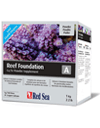



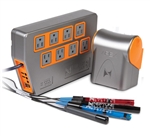

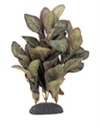

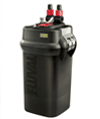

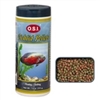





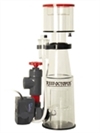




 Are you in the market for a reef aquarium light for a new or existing aquarium? Here are some of the things you should consider when buying a new light.
Are you in the market for a reef aquarium light for a new or existing aquarium? Here are some of the things you should consider when buying a new light.